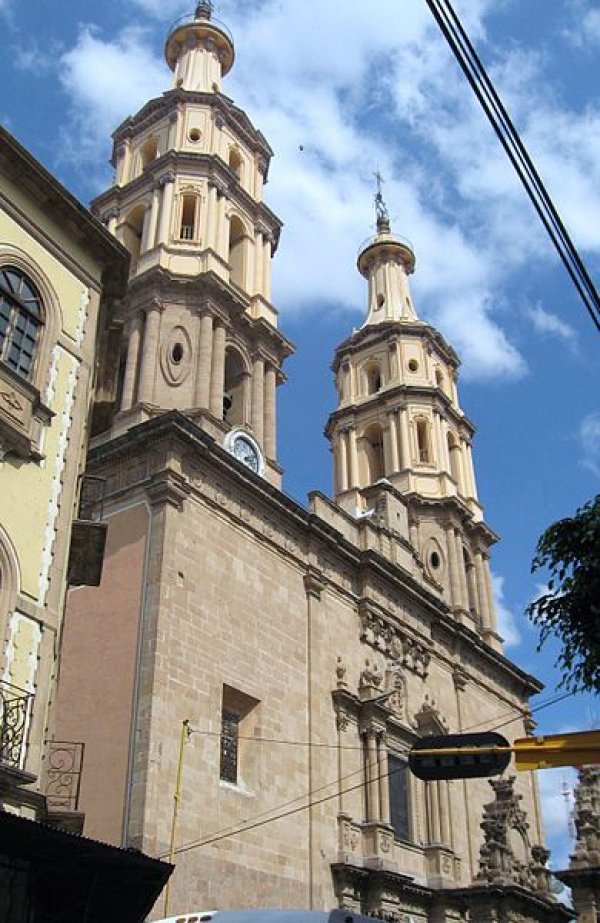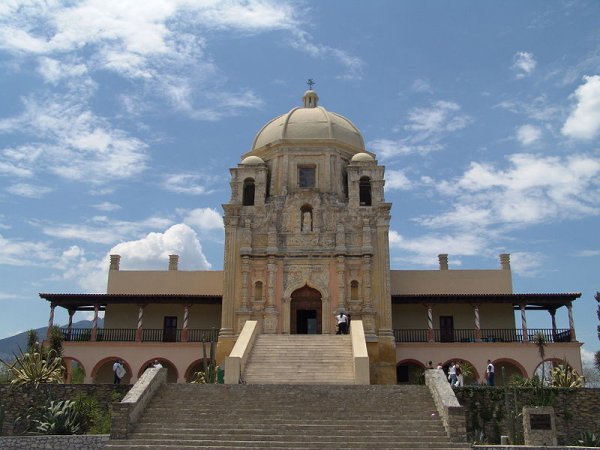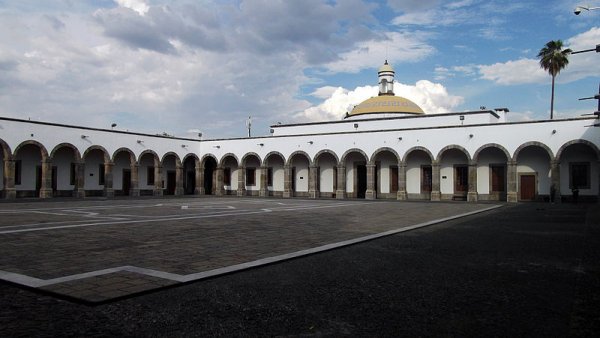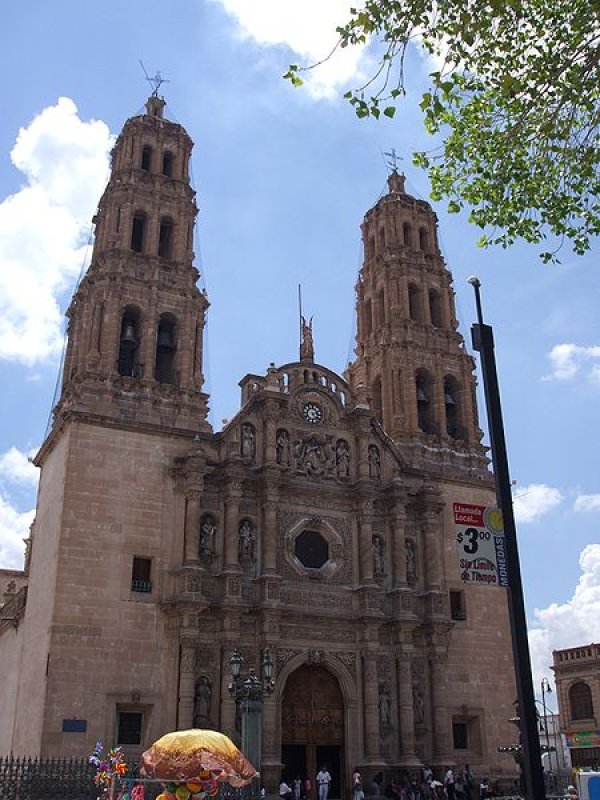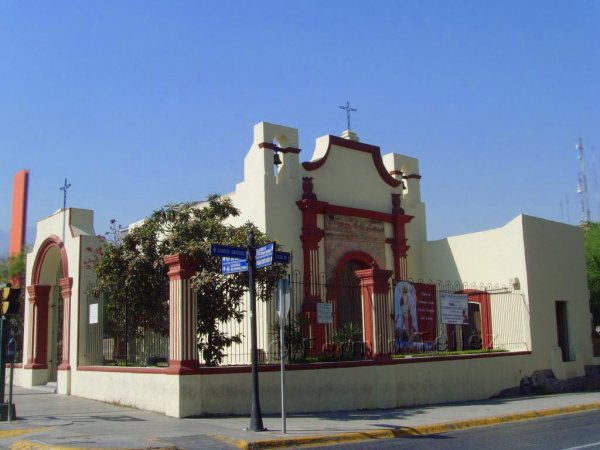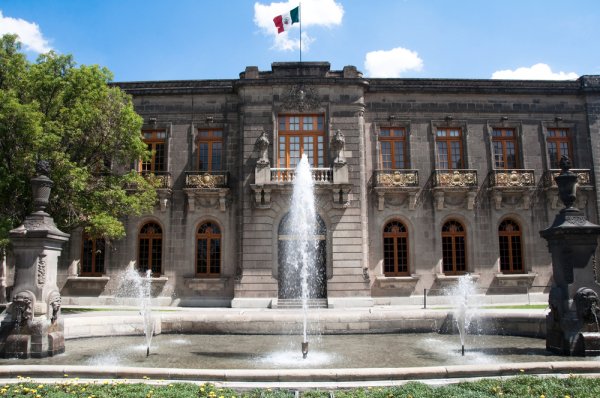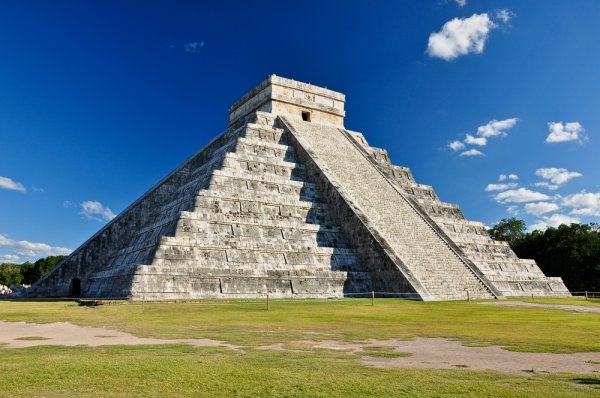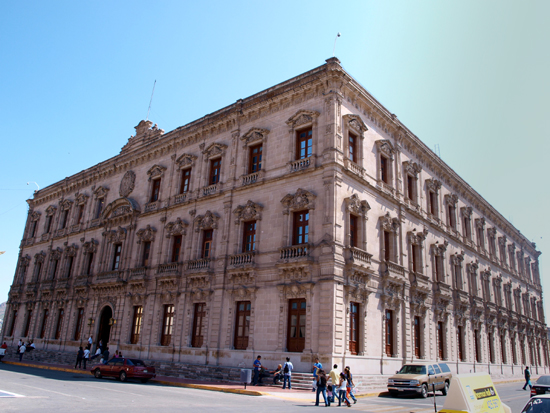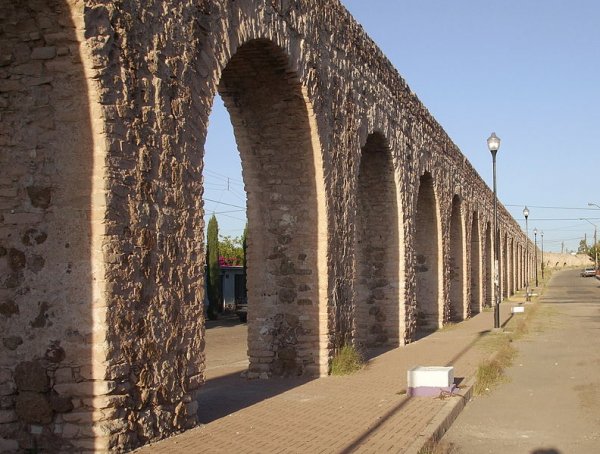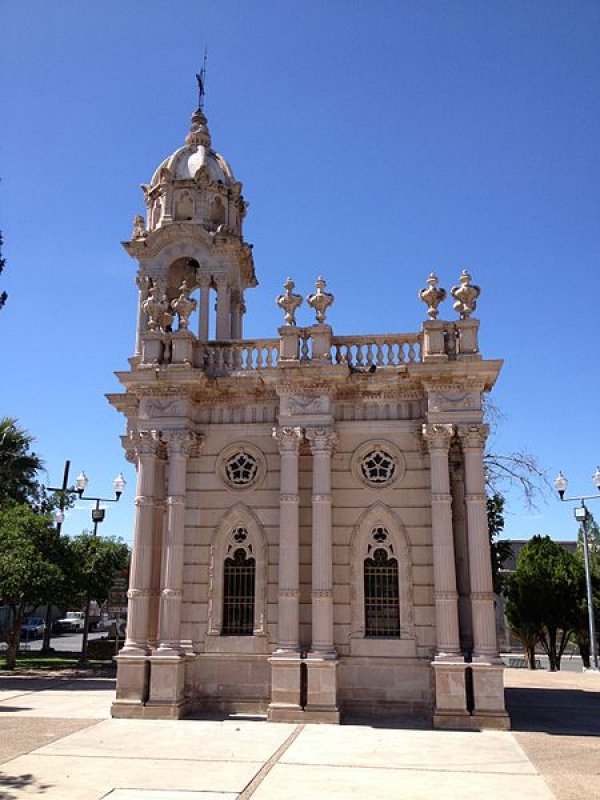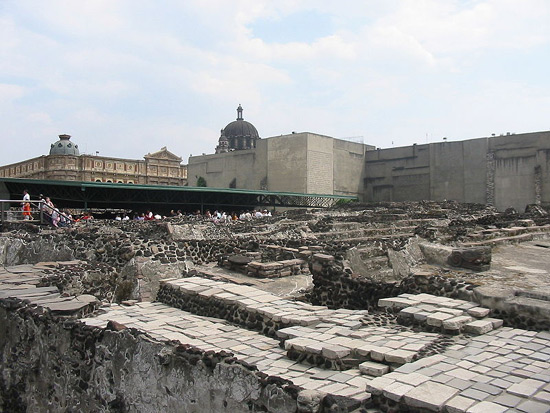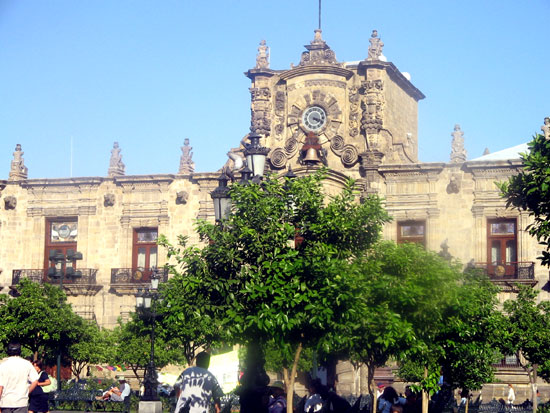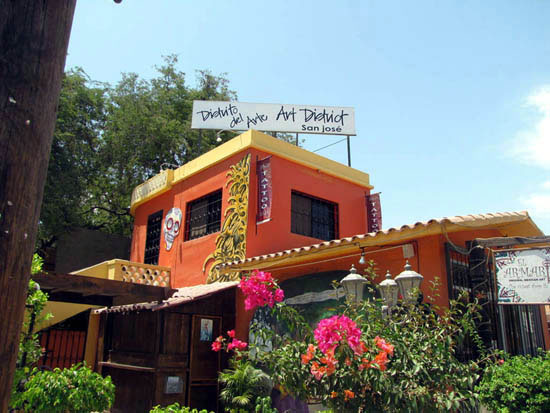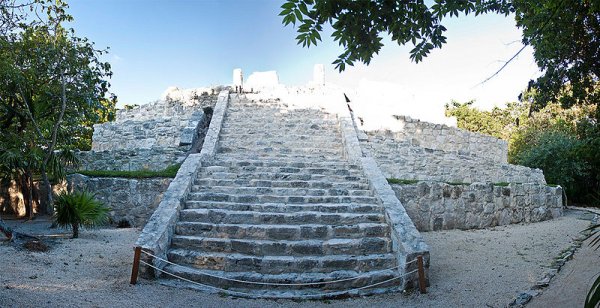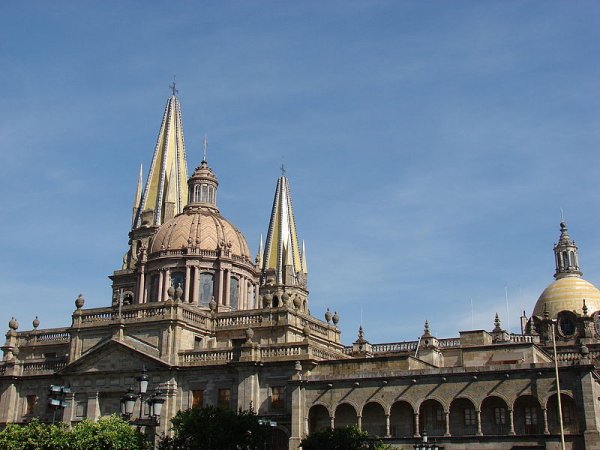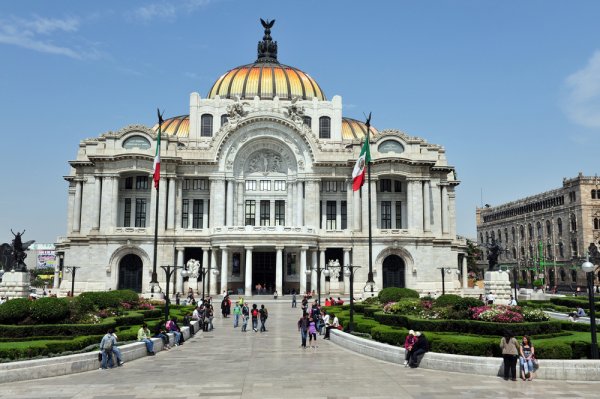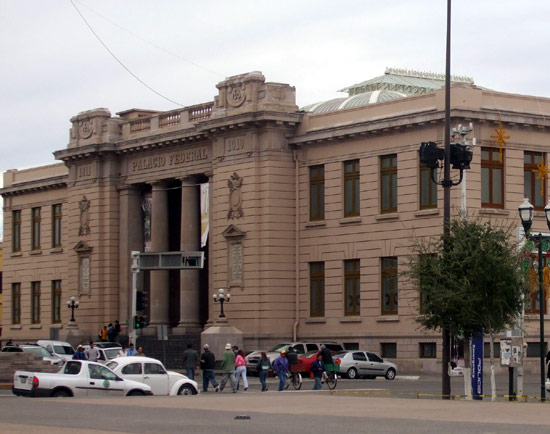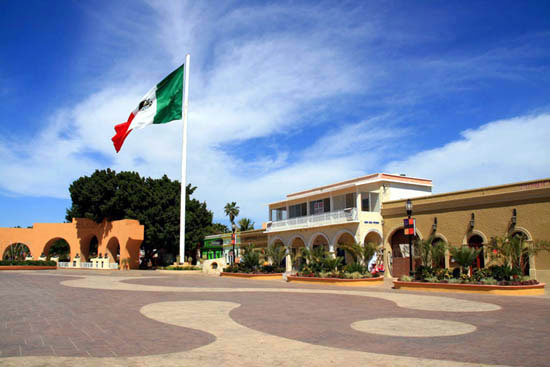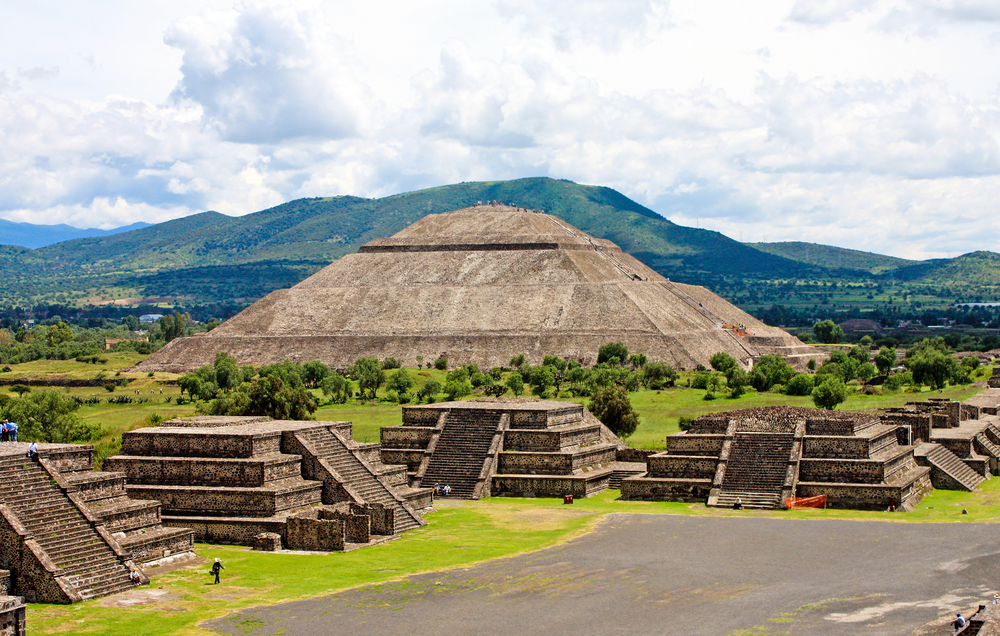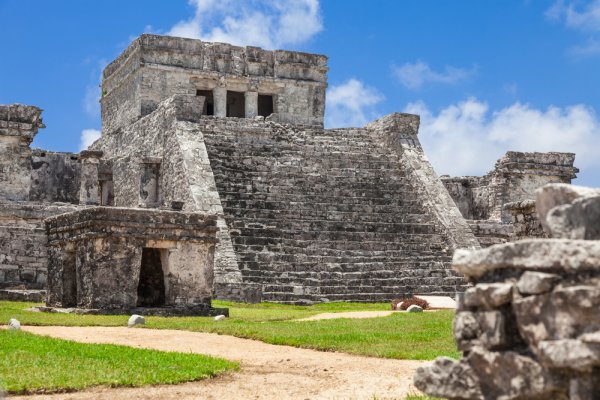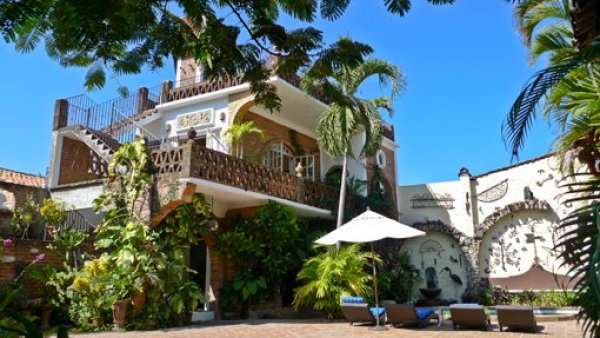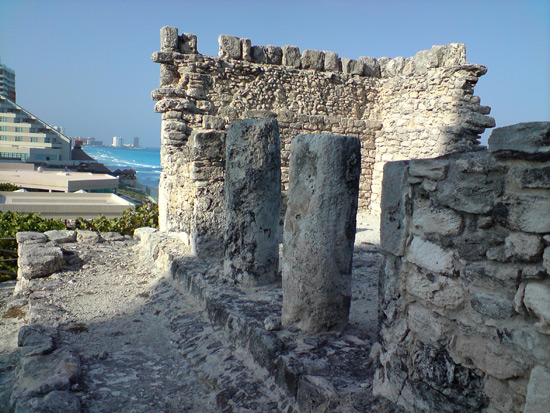Points of Interest
Basilica Cathedral of Our Lady of Light
Pedro Moreno Zona
Centro León, Mexico
The imposing, baroque León Cathedral dates back to the mid-1700s, although it was not completed until well into the 19th century. Inside the religious structure are spiritual artworks designed to protect The Virgin of Light, the city's patron saint. For history buffs, there are cathedral and surrounding grounds tours that delve further into the history and religious significance of the neighborhood.
Bethlehem Cemetery
Belem 684 El Retiro
Guadalajara, Mexico
Opened in 1848 and closed to new burials in 1896, this cemetery originally contained two discrete areas, one for the common people and one for the wealthy. Only the latter section remains. Grandiose tombs of elaborate design fill the space and many of the city's most important figures reside in a mausoleum under the chapel. Numerous legends of ghosts and vampires haunt the cemetery, making this an ideal place for a nighttime tour.
Bishop's Palace
Palacio del Obispado Rafael José Vergel Col. Obispado
Monterrey, Mexico
Called the Palacio del Obispado colloquially, this attraction's official name is really the Museo de Historia Regional de Nuevo León (Nuevo León Regional History Museum). It was converted to a museum in 1956 and depicts the history of the state of Nuevo León. Monterrey's government built the palace on el Cerro del Obispado (Bishopric Hill) in the late 18th century as a retirement home for an important bishop, Rafael José de Verger, who convinced the monarchy to move the bishop's office to Monterrey. During the Mexican-American War and other wars, the palace served as a fort. The building is now the best example of colonial architecture left in the city. Hours of operation are 10 a.m. to 7 p.m., Tuesday through Sunday (the museum is free on Sunday). The museum is closed Mondays.
Cabañas Hospice
Calle Cabanas 8, Plaza Tapatia
Guadalajara, Mexico
Founded in 1791 as a combination workhouse, hospital, orphanage, and almshouse and completed in 1829, the 164-meter (538-ft) long building now houses Instituto Cultural Cabañas, as well as affiliated schools for arts and crafts. The design features a series of conjoined 7.5-meter (25-ft) high, single-story structures circling a 15-meter (50-ft) domed chapel and 23 courtyards. In the 1930s, Mexican muralist José Clemente Orozco painted a series of monumental frescoes on the interior walls. One of these, the spectacular El Hombre de Fuego (The Man of Fire), adorns the chapel dome.
Cathedral of Chihuahua
Catedral de la Santa Cruz Plaza de Armas
Centro Chihuahua, Mexico
Built with pink quarry stone, the churrigueresque-style structure is the seat of the Archdiocese of Chihuahua. Completed over a period of 100 years beginning in 1725, the three-nave building, with two identical 40-meter-tall (131-foot-tall) towers, features an impressive dome resembling the one on Saint Peter's Basilica in Rome. Statues of the 12 apostles were added in the 19th century. The cathedral organ was brought from Germany, as was the octagonal stained-glass window that graces the facade, while the kiosk and sculptures in the adjacent Plaza de Armas originated in Italy. The Museo de Arte Sacro (Museum of Religious Art), located in the basement, holds many pieces of baroque art.
Chapel of Sweet Names
Dulces Nombres Matamoros y Dr. Coss Zona
Centro Monterrey, Mexico
Originally built in 1830, this small church is the second oldest in Monterrey after the Metropolitan Cathedral. In 1938 the government declared it part of the "patrimonio nacional," making it an official historic landmark. Even so, the church fell into disrepair and had to be restored in 1945. It escaped demolition because of its unique combination of architectural and artistic styles, including Franciscan and Tuscan. During the day, the church is open to the public, although it is an official church of the archdiocese and Mass is held regularly. It features large murals carved in stone blocks and a simple façade. The church is self-contained in a wrought-iron fence with a shady plaza that invites the weary traveler to sit and recover from the heat.
Chapultepec Castle
Castillo de Chapultepec Chapultepec Park and Polanco
11100 Mexico City, Mexico
This castle stands atop Chapultepec Hill, at a height of 2,325 meters (7,628 feet), and presently houses the National Museum. Constructed in 1785 in a baroque style, the castle has been used for several purposes during its history. Abandoned during the Mexican War of Independence, the castle later served as a military academy. The palace became the official residence of presidents during the second Mexican empire and acquired several pieces of furniture, art, and fine household items from Europe. From 1939, the castle became the seat of the National Museum of History, which houses the collections of the former National Museum of archaeology, history, and ethnography.
Chichen Itza
Pisté
Yucatan 97750, Mexico
This large pre-Columbian temple city, built by the Mayans, served as the most important political and economic center of the Mayan civilization. The Mayan, Toltec, and Aztec people have all left their indelible mark on it throughout its 1,000-year history. The great city has imposing structures including a pyramid (El Castillo), Temple of Chac Mool, Hall of the Thousand Pillars, El Caracol (an astronomical observatory), and the ball court. The buildings are richly adorned with columns and relief carvings of plumed serpents, warriors, and priests. Inner walls of the vaults have murals depicting scenes of war and daily life.
Chihuahua Government Palace
Palacio de Gobierno Plaza de Armas Centro Juarez
Chihuahua, Mexico
Built between 1882 and 1892 with ocher-colored stone from local quarries, this grand neoclassical style building is the seat of the government of the state of Chihuahua. It was severely damaged by a fire in 1921, but fully restored six years later, at which time a third floor was added. The ground floor corridors feature a set of murals painted in 1961 by Mexican artist Aaron Piña Mora Hidalgo that depicts the history of the state of Chihuahua. The eternal flame at the Altar de la Patria (Altar of the Fatherland) in the central patio marks the spot where a Spanish firing squad executed Father Miguel Hidalgo, leader of the Mexican War of Independence, in 1811. Also located here is the Museo Galería de Armas (Gallery of Arms Museum), with weaponry, uniforms, and other items from the war.
Colonial Aqueduct
Acueducto Colonial Aldama and Calle 58
Chihuahua, Mexico
Construction on an aqueduct to supply much-needed water to this dry, desert city began in 1751, but it was not completed until 1793. The structure, with arches up to 24 meters (79 feet) high, originally extended for more than 6 kilometers (3.7 miles) from the Rio Chuvíscar, but less than a kilometer remains standing.
El Rey Ruins
Km 18 Kukulcán Boulevard, Hotel Zone
77500 Cancún, Mexico
El Rey is one of the most important archaeological sites on Cancun Island. Although it originated as a small settlement in early times, it was in the late Postclassic (1200–1550 CE) era that it reached its most important stage of growth. It is believed that El Rey, along with nearby San Miguelito, formed the core area of a town dedicated to maritime trade and fishing activities. The archaeological interventions carried out on the site have made it possible to visit many of the structures lined up along the main road and its two small squares. The most important building is number 2, which consists of a pyramidal base with a temple, in which at least two construction stages are observed. Also of interest are buildings 1 and 4, which are palaces with large galleries with colonnades that supported flat roofs. Due to their size, they seem to be administrative buildings, in which meetings were held between the ruling groups.
– Information provided by the Government of Mexico
Francisco "Pancho" Villa's Mausoleum
Mausoleo de Francisco Villa Nicolás Bravo y Calle 5
Centro Chihuahua, Mexico
Though this wedding cake of a crypt was built to house Pancho Villa's remains, the body was instead buried in the city of Hidalgo del Parral, from which it was later transferred to Mexico City. The mausoleum nonetheless remains as a monument to the revolutionary leader. The highly ornate facade features an arched gate and six 8-meter-tall (25-foot-tall) sculpted columns. The roof is topped by a 5-meter (16-foot) cupola supported by additional columns.
Great Pyramid of Tenochtitlan
Templo Mayor Seminario 8 Centro Histórico
06060 Mexico City, Mexico
Templo Mayor was the most important temple in Tenochtitlan, the Aztec city located on the site where Mexico City now stands. Built in the 14th century in honor of Huitzilopochtli, the god of war, and Tlaloc, the god of rain and agriculture, the temple was destroyed during the Spanish conquest. But the discovery of an Aztec carving in 1978 led to excavation of the ruins, which are now viewable from platforms overlooking the pit in which the ruins sit. The excavation also holds the Casa de los Caballeros Aguila (House of the Eagle Knights), which served as the home for an elite group of Aztec warriors. A museum adjoining the site holds some 7,000 artifacts discovered during the excavation as well as a model of the original pyramidal-shaped temple.
Guadalajara Government Palace
Palacio de Gobierno Corona 31
Guadalajara, Mexico
Built in 1774 as the headquarters for the Spanish-appointed governor of El Nuevo Reino de Galicia, the Palacio de Gobierno later served as headquarters for the administration of Presidente Benito Juárez during his first term in office while French forces occupied Mexico City. The government of the state of Jalisco now uses the generally neoclassical structure. The building earned a place in Mexican history when Padre Miguel Hidalgo delivered his famous 1810 Bando contra la Esclavitud (Edict Against Slavery). A large mural of Hidalgo by Mexican artist José Clemente Orozco adorns the central staircase, and another showing the priest signing the edict is found in the Congreso del Estado (State Congress) chamber on the second floor.
Historic Art District of San José del Cabo
San José del Cabo, Mexico
Both locals and visitors delight in the burgeoning art district in the historic area of San José del Cabo. Old adobe buildings housing several galleries line the main streets of the city's historic district, V. Guerrero and A. Obregon. These galleries feature unique works by local, Mexican, and international artists. Each Thursday from November through May the district hosts a nighttime art walk from 5pm to 9pm, during which guests can sip wine and view fabulous fine art. Galleries include Amber Art, Arte Julian Garcia, Barrio Latino, Casa Don Pablo, Galeria De Ida Victoria, La Dolce Galeria, Old Town Gallery, Pez Gordo, and others.
King Ruins
Ruinas El Rey Kilometer 17 Kulkulcan Boulevard
Cancún, Mexico
Located in Cancún's Zona Hotelera, these ruins were once an ancient city that contained two plazas and several pyramids. The ruins, which date to 2nd century BCE, feature painted stucco frescoes, and the site itself is a great place to catch a glimpse of sunbathing iguanas. The ruins are located across the street from the beach on the lagoon side of the street, just south of the Hilton Hotel.
Metropolitan Cathedral of Guadalajara
Catedral Metropolitana Avenida 16 de Septiembre
Guadalajara, Mexico
Formally known as the Cathedral of Guadalajara and Catedral de la Asunción de María Santísima (Cathedral of the Assumption of Holy Mary), this massive church was completed in 1618. Its two 60-meter (197-ft) towers rose up in 1854 to replace those destroyed by an earthquake in 1849. The cavernous interior with its large central dome will take your breath away. Designed in the Renaissance style with neo-Gothic towers, the structure features stained glass windows imported from France, altars of marble and silver, and a huge pipe organ that is among the largest in Mexico. The cathedral houses the relics of Santa Inocencia as well as the heart of a former Mexican president.
Metropolitan Cathedral of Mexico City
Catedral Metropolitana de la Ciudad de Mexico S/N Plaza de la Constitución Centro Histórico
06000 Mexico City, Mexico
Located on Mexico City's central square, this Spanish baroque cathedral is the largest in the western hemisphere. Its construction spanned the period between 1567 and 1788. The church has 64-meter-tall (210-foot-tall) neoclassical bell towers, which hold 18 bells, and a central dome designed by the Spanish architect Manuel Tolsa. The church stands on a lake bed and there has been considerable sinking owing to the soft clay subsoil. Underground tunnels and scaffolding have been added to stabilize the building. The cathedral has a vast collection of prized works of art from the colonial era, including paintings, altarpieces, and statues in full graphic color.
Palace of Fine Arts
Palacio de Bellas Artes Calle Lopez Peralta
06050 Mexico City, Mexico
The Palace of Fine Arts is in a historic building that was once the National Theater. Designed by Italian architect Adamo Boari in 1901, the theater has an exterior of Italian white marble and classic murals. There is a square with gardens and Pegasus statues. The interiors are elegantly designed with art decorations, notable among them a stained glass curtain depicting a volcano and the valley of Mexico. The theater's repertory includes classical music, opera, and dance, notably the Baile Folklórico. Wakes for famous Mexican artists have also been held in the theater. The Palacio also has two museums, the Museo del Palacio de Bellas Artes and the Museo de la Arquitectura.
Palacio Federal de Chihuahua
Federal Palace of Chihuahua 911 Venustiano Carranza
Centro Chihuahua, Mexico
Completed in 1910 to celebrate the centennial of the Mexican War of Independence, this neoclassical style building incorporates an older tower in whose basement cell revolutionary leader Miguel Hidalgo was imprisoned for 98 days. On the eve of his execution, he inscribed a poem on the wall thanking the warden and guards for their kindness. The poem was later engraved on a bronze plaque that now hangs on the cell wall. The building features a beautiful covered patio with a leaded glass ceiling with a grand double staircase leading up from it. Though built to hold offices of the federal government, today the structure houses the Centro de Patrimonio Cultural (Cultural Heritage Center).
Palenque
Near the Usumacinta River Palenque
Chiapas, Mexico
This archaeological site contains some of the finest architecture, sculptures, roof combs, and bas-relief carvings of the Mayan civilization in Mexico. The site was the capital of the Mayan Empire during the Classical period and reached its zenith between 500 and 700 CE. The Mayan Ajaw (ruler), K'inich Janaab' Pakal, is credited with reviving the city's art and architecture and for rebuilding Palenque between 615 and 683 CE. The funerary temple dedicated to him preserves lengthy inscriptions and sculpted reliefs that reveal the complex history, mythology, and ritual practices of the Mayan Classical period.
Plaza Mijares
San José del Cabo, Mexico
Exuding a relaxed, friendly air, San José del Cabo's Plaza Mijares is one of the most traditional town squares you'll find in this region. In the evening, local families flock to this square for social hour, young children on tricycles wheel about while others play kickball, and still others wander, seemingly without parental supervision. Balloon vendors woo children and menudo stands lure in hungry adults both day and night. Local bands storm the square's small stage, especially on the weekends. This gorgeous and lively square, lined with colorful historic buildings including the Iglesia San José, and with ancient trees, small shops, and eateries, is a supremely pleasant place to spend a while.
Rotunda of Illustrious Jaliscans
Rotonda de Los Jaliscienses Avenida Hidalgo and Calle Liceo
Centro Guadalajara, Mexico
This circular monument, built in 1951, consists of an open dome supported by 17 striated columns without base or capital. Each column corresponds to a statue of one of 11 historic figures from the state of Jalisco. Underneath the monument, 98 urns contain the remains of these and other famous Jaliscans. A central crypt holds the mummified body of military leader Ramón Corona Madrigal, who led the successful battle to defend the city against the French in the 1850s.
Teotihuacan
San Juan Teotihuacan, Mexico
The ruins of this ancient sacred city, constructed around 300 CE, cover an area of 31 square kilometers (12 square miles). Aztecs believed that the gods were born here. The colossal monuments inside the city complex exhibit a high degree of geometrism and symbolism. The most prominent structures include the Temple of Quetzalcoatl (the Rain God), Pyramid of the Sun, and the Pyramid of the Moon. The stalls of the temples are lavishly decorated with murals depicting formidable warriors, jaguars, and carved serpent heads. The burial pits in the temple are full of the skeletal remains of humans who were sacrificed to avert the destruction of the world.
Tulum
Quintana Roo, Mexico
Tulum (wall) was primarily built as a defense against invasion but also served as an important place of worship of the descending God. Although inscriptions dated from 564 CE have been discovered at the site, it is assumed that most of the structures were built around 1300. Until the late 20th century, the local Mayan people continued to visit the temples to worship and burn incense, but their numbers began to dwindle with the heavy influx of tourists to the area.
Villa Leonarda
Guerrero 430
Puerto Vallarta, Mexico
Villa Leonarda is the oldest building in the city. Constructed around 1860 when Vallarta, was called Las Peñas, it was a tiny settlement that supplied food and materials for silver mining operations in the Sierra Madre mountains. Made of adobe, brick, and wood, the villa consists of two homes built around a central courtyard. Still in private hands, the substantially upgraded property is available for vacation or long-term rental but open to the public only for occasional special events.
Yamil Lu'um
Kilometer 13.5 Kulkulcan Boulevard
Cancún, Mexico
Located right in the middle of the Zona Hotelera, Cancún's own beachfront Mayan ruins are actually on the grounds of the Hotel Sheraton but are open to public visitation. The outer walls of a temple and a weathered statue of Chac-mool, the Mayan god of rain and weather, still stand, looking out over the clear blue Caribbean awaiting the fulfillment of ancient prophecies.
Copyright © 1993—2024 World Trade Press. All rights reserved.

 Mexico
Mexico 